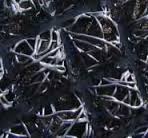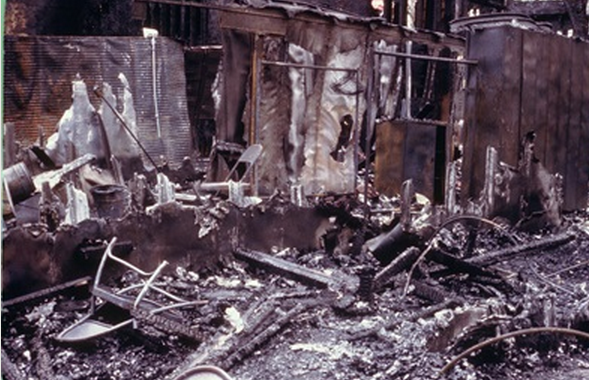Enkadrain Family of Drainage Products
Enkadrain is a proven drainage products that has been used worldwide for over 25 years in a myriad of applications. It got its first job in Europe More than 25 years ago successfully draining soil and offering hydrostatic pressure relief.
Over the years, the Enkadrain product line has grown to meet the demands of the rapidly changing construction market. As building designs have become more complex, architects and engineers have been called upon to work more creatively with materials that add value and save resources. Always innovative and on the cutting edge of technology, Colbond Building Products has now added a complete line of geocomposite drains made from recycled polymers that contribute to the LEED program.
Let's explore some of the areas that Enkadrain excels.
- Enkadrain 3000: A three-layer composite consisting of a polypropylene geotextile filter, a polypropylene drainage core, and a polypropylene nonwoven geotextile on the other side. This model is suitable for small and medium-sized applications that require moderate drainage.
This product is suitable for small and medium-sized applications that require moderate drainage, such as residential landscaping, building foundations, and retaining walls.
- Enkadrain 3601: A high-performance, three-layer composite with an HDPE drainage core and a nonwoven geotextile filter on one side. This model offers high drainage capacity and excellent filtration performance, making it ideal for applications such as highways, airport runways, and sports fields.
This high-performance product is ideal for applications that require high drainage capacity and excellent filtration performance, such as highways, airport runways, sports fields, and landscaping projects.
- Enkadrain 3801: A premium, three-layer composite with an HDPE drainage core and a nonwoven geotextile filter on one side. This model offers the highest drainage capacity of all Enkadrain models, making it ideal for heavy-duty applications such as industrial sites and high-traffic areas.
This premium product offers the highest drainage capacity of all Enkadrain models, making it ideal for heavy-duty applications such as industrial sites, high-traffic areas, and underground structures.
- Enkadrain 3511R: A three-layer composite with a polypropylene drainage core and a woven geotextile filter on both sides. This model offers high filtration efficiency and is resistant to clogging, making it ideal for applications such as green roofs and landfill drainage.
This product is designed for applications that require high filtration efficiency and resistance to clogging, such as green roofs, landfill drainage, and athletic fields.
- Enkadrain 3615:
- Enkadrain 3811:
Enkadrain for Planters and Plaza Decks

Enkadrain offers excellent drainage for planters and plaza decks. By replacing gravel, it reduces weight and increases soil area for a healthier root mass.
Enkadrain 3000R Series products are a new generation of the Enkadrain family. These new drainage composites are made of a post-industrial recycled polypropylene drainage core of fused, entangled filaments and a geocomposite fabric bonded to one or two sides. These products can contribute up to 2 LEED points when used in conjunction with other recycled content products.

A family of three-dimensional, multilayer drainage products consisting of a core of fused, entangled filaments and one or two nonwoven geotextile fabrics attached. Designed to relieve hydrostatic pressure from soils abutting below grade structures, Enkadrain provides a lightweight alternative to traditional sand and gravel drains. The geotextile filter fabric allows water to pass through to the polymeric core as it retains the surrounding soil. Ground water is then channeled through the Enkadrain core to a perforated pipe, weep hole or other discharge system before it ever reaches subsurface walls - keeping the structure dry.
Where Will You Find Enkadrain Products?
- Foundations & Retaining Walls
- Commercial Building
- Insulated Concrete Forms
- Planters Plaza Deck
- Beneath Slabs
- Underground Parking
- Lagging Walls
- Blind Forms
- Roof Gardens
- Wood Structures
Why Do Architects and Engineers Trust Enkadain Products on Their Projects?
• highly flexible - conforms to all surface shapes
• proven and predictable flow rates
• longer and wider rolls reduce installation costs
• no core overlap required - fabric overlap for easier seaming
• protects waterproofing during and after backfill
• continuous flow even under high loads
• fabric provides excellent bonding surface for shotcrete
Is Enkadrain Environmentally Friendly?
Enkadrain 3000R Series products are a new generation of the Enkadrain family. These new drainage composites are made of a post-industrial recycled polypropylene drainage core of fused, entangled filaments and a geocomposite fabric bonded to one or two sides. These products can contribute up to 2 LEED points when used in conjunction with other recycled content products.
A family of three-dimensional, multilayer drainage products consisting of a core of fused, entangled filaments and one or two nonwoven geotextile fabrics attached. Designed to relieve hydrostatic pressure from soils abutting below grade structures, Enkadrain provides a lightweight alternative to traditional sand and gravel drains. The geotextile filter fabric allows water to pass through to the polymeric core as it retains the surrounding soil. Ground water is then channeled through the Enkadrain core to a perforated pipe, weep hole or other discharge system before it ever reaches subsurface walls - keeping the structure dry.
What Are The Differences Between The Enkadrain Products?
Drain Flow (gal.min/ft):
When comparing Enkadrain 3611R, 3615R, and 3811R, regardless of the soil seepage (gal.min/ft) or the backfill depth (10 ft to 40 ft), Enkadrain 3611R has the largest drain flow (gal.min/ft) value whether it's silty sand with a K value of .33, Clayey San K value of .42, or Sandy Clay K value of .56. Enkadrain 3811R has the least amount of drain flow.
Sloped Green Roof Gradients:
For a Flat <1° (<2%) roof gradient, Enkadrain 90118, 9120, and 9125 are recommended.
For a Low 1-5° (2-9% ) roof gradient, Enkadrain 9010, 3611, 3615, 3811 and EnkaRetain&Drain 3111 and EnkaRetain&Drain 3211 are recommended.
For a Steep 5-20° (9-36%) roof gradient, Enkadrain 3610, 3801, 7910, EnkaRetain&Drain 3111 and EnkaRetain&Drain 3211 are recommended.
For a Very Steep >20° (>36%) roof gradient, Enkadrain 3601, 3801 and 7910 are recommended.
Profile Heights of Enkadrain Drainage Products
Various green roof scenerios call for different Enkadrain products. Enkadrain comes in a thin, regular and high profile format.
| Profile Height | |
| High Profile Enkadrain- Height- (0.6") |
Enkadrain 9118 Enkadrain 9120 Enkadrain 9125 |
| Regular Profile Enkadrains (0.4") |
Enkadrain 9010 Enkadrain 3611 Enkadrain 3615 Enkadrain 3811 EnkaRetain&Drain 3111 EnkaRetain&Drain 3211 |
| Thin Profile Enkadrains (0.25”) |
Enkadrain 3601 Enkadrain 3801 Enkadrain 7910 EnkaRetain&Drain 3111 EnkaRetain&Drain 3211 |
Common Questions and Solutions:
Question: For roofs that have ponding water which can cause plant distress, which Enkadrain should be used?
Answer: Enkadrain 9118, Enkadrain 9120, and Enkadrain 9125 will lift the growing plants above the ponding water.
Question: The roof has sufficient fall to the drain, but we need drainage to convey rounoff to roof drains. What do you recommend?
Answer: Enkadrain 9010, Enkadrain 3611, Enkadrain 3615, Enkadrain 3811 or Enkadrain 3811 will move the water. If you need the drains to offer high water storage capacity, EnkaRetain&Drain 3111, or EnkaRetain&Drain 3211 will do the job.
Question: The water on the roof runs off too quickly on steep slope, thus the growing substrate can become dry especially near the top of the roof.
Answer: If you need to slow down the runoff and allow time for the rain to saok into the grwoing substrate, use Enkadrain 3601, Enkadrain 3801, or Enkadrain 7910. If you need to retain the water and compensate for the higher runoff, then use either EnkaRetain&Drain 3111, or EnkaRetain&Drain 3211.
Question: The roof has and exceedingly steep gradient and thus a very high runoff. We risk the green roof materials sliding off.
Answer: Enkadrain 3601, Enkadrain 3801, or Enkadrain 7910.
To learn more about these high quality products or request a sample, please click here











